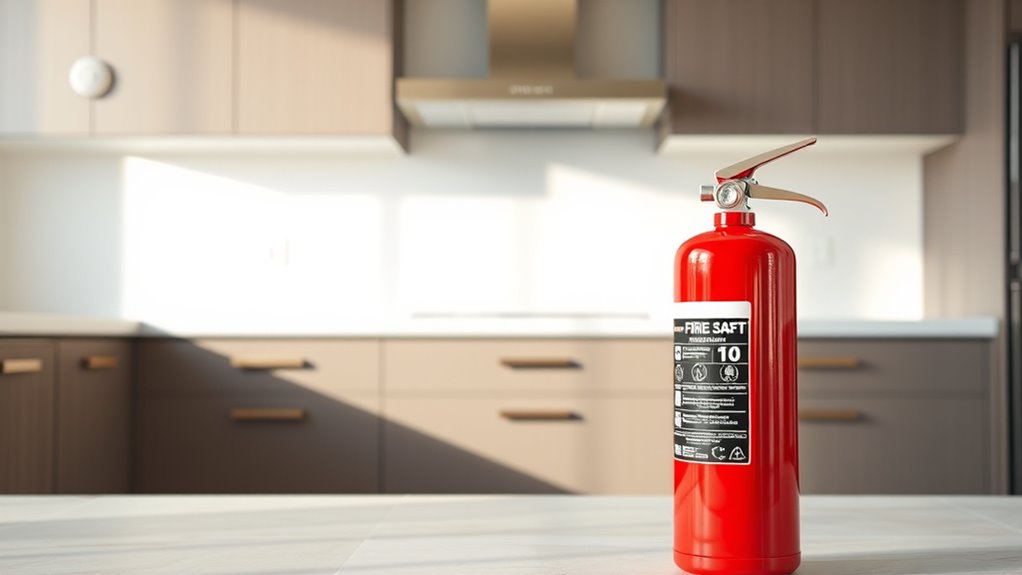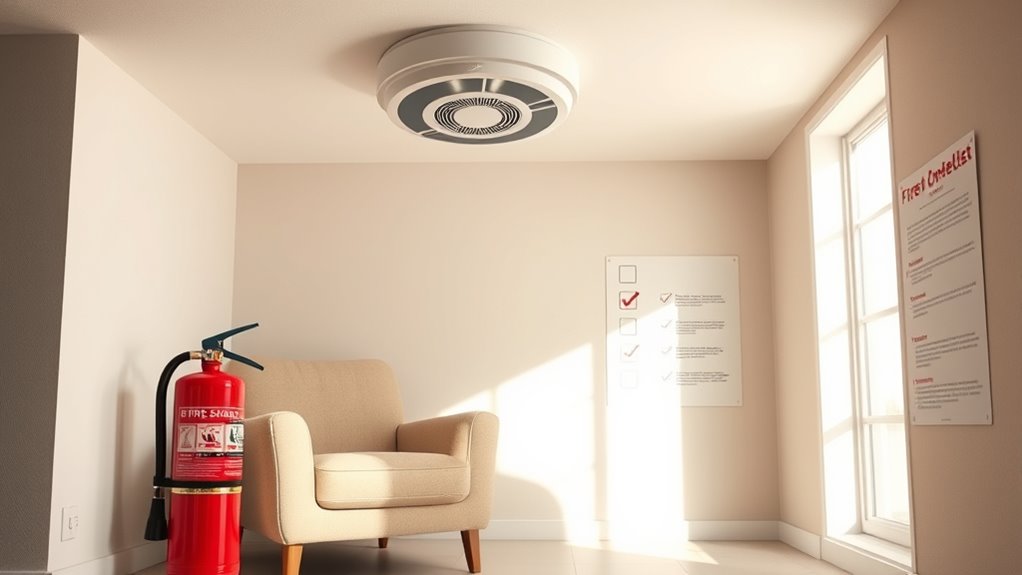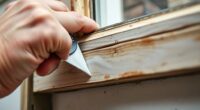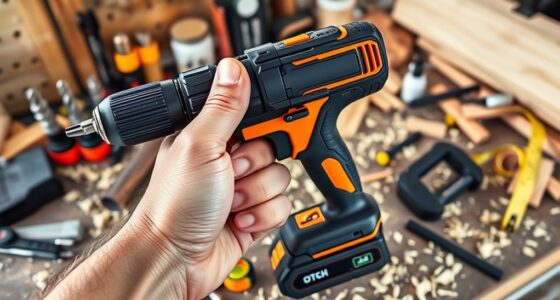To keep your home safe, install smoke detectors on every level, especially near bedrooms and common areas, and test them monthly. Replace batteries yearly and keep alarms dust-free. Place fire extinguishers in key spots like the kitchen, garage, and near heat sources, ensuring they’re accessible and well-maintained. Know how to use them properly and develop a fire escape plan. Keep these essentials in check, and you’ll be better prepared for emergencies—learn more to protect your home effectively.
Key Takeaways
- Install smoke detectors on every home level, especially near bedrooms and common areas, and test monthly for proper function.
- Keep fire extinguishers accessible on each floor, particularly in kitchens and garages, and check for full charge regularly.
- Regularly test and maintain smoke alarms, replacing batteries annually or when alarms chirp.
- Train household members on correct fire extinguisher use and develop a fire escape plan for quick evacuation.
- Practice good fire prevention habits, like avoiding overloaded outlets and never leaving cooking unattended.

Are you prepared to protect your home from fire emergencies? Fire safety isn’t just about luck; it’s about taking proactive steps to minimize risks and guarantee everyone’s safety. Two of the most essential tools in this effort are smoke detectors and fire extinguishers. Nearly every household in the U.S. has at least one smoke alarm, but many don’t test them as often as recommended. Regular testing is critical because nearly half of smoke alarm failures are caused by missing or disconnected batteries. When working properly, smoke alarms provide early warnings, giving you extra time to evacuate and potentially saving lives. In fact, homes with functioning smoke alarms see a 60% lower death rate per 1,000 home fires. That’s a significant difference, emphasizing how necessary it is to keep these devices in good working order.
Regularly test and maintain smoke alarms to reduce fire risks and save lives.
You should install smoke detectors on every level of your home, especially near bedrooms and in common areas. Test your alarms at least once a month and replace batteries annually or when they start to chirp. Consider interconnected alarms that sound throughout your home simultaneously for maximum alertness. Remember, a working smoke alarm isn’t just about having the device; it’s about maintaining it. When it’s time to replace your smoke detectors, do so promptly, and follow manufacturer instructions for installation and testing. Using data analytics can help monitor the performance and maintenance needs of your safety devices.
Fire extinguishers are another critical component of home fire safety, but they’re often overlooked. Different fire classes require different types of extinguishers, so understanding whether you need A, B, or C types is beneficial. Keep extinguishers on every level of your house, especially in the kitchen, garage, and near heating sources. Accessibility is key—ensure they are easy to reach in an emergency, and check regularly to confirm they are fully charged and in good condition. Regular inspections are essential, as a fully charged extinguisher can be the difference between containing a small fire and facing a disaster. It’s also important that everyone in your household knows how to use the extinguisher correctly. Simple training or demonstrations can make a big difference if fire strikes.
Implement fire safety routines like avoiding overloading electrical outlets, never leaving cooking unattended, and maintaining heating equipment properly. Develop and practice a fire escape plan, so everyone knows how to evacuate quickly and safely. Conducting regular fire drills prepares your family for real emergencies. Educating yourself and your household about these essentials creates a safer environment and reduces the chances of fire-related injuries or deaths. Remember, prevention combined with preparedness makes all the difference when it comes to home fire safety.
Frequently Asked Questions
How Often Should Smoke Detectors Be Tested and Replaced?
You should test your smoke detectors monthly to confirm they work properly. Replace them according to the manufacturer’s guidelines, usually every 8-10 years or when they fail sensitivity tests or show physical damage. Regularly check batteries and clean detectors to keep them in good condition. Keep records of tests and replacements to stay compliant with local regulations and maintain your home’s safety effectively.
What Types of Fire Extinguishers Are Best for Home Use?
You should choose multipurpose “ABC” fire extinguishers for home use because they handle various fire types, including common household fires, electrical, and flammable liquids. Place them in key areas like the kitchen, garage, and near exits for quick access. Look for lightweight models with clear instructions, mounting brackets, and safety pins. Regularly check and maintain them to guarantee they’re ready whenever needed, providing peace of mind and safety for your family.
How Can I Prevent False Alarms From Smoke Detectors?
Did you know that faulty smoke alarms cause over 50% of false alarms? To prevent this, regularly clean your detectors and replace batteries every six months. Place them away from kitchens or bathrooms to reduce steam triggers. Use dual-sensor models for better accuracy, and test your alarms monthly. Avoid over-cleaning with harsh chemicals, and fix or replace units that persistently false alarm. Staying proactive keeps your home safe and false alarms at bay.
Where Is the Safest Place to Install Smoke Detectors?
You should install smoke detectors high on walls or near the center of ceilings to catch rising smoke effectively. Place at least one on every level, including basements and attics. Keep them outside bedrooms and sleeping areas, and avoid installing near windows, doors, or ducts to prevent false alarms. Position detectors away from cooking appliances, fans, and fluorescent lights, ensuring proper distance to maximize safety and functionality.
Are There Specific Extinguishers for Electrical Fires?
Yes, there are specific extinguishers for electrical fires. You should use CO2 extinguishers because they don’t conduct electricity and effectively displace oxygen to suffocate the fire. Another option is Class C extinguishers designed for electrical fires. Always remember to turn off power before attempting to extinguish, and keep a safe distance to avoid shocks. Regularly check your extinguishers to guarantee they’re ready when needed.
Conclusion
By installing smoke detectors and keeping a fire extinguisher handy, you’re building a safety net for your home. Think of these tools as your home’s heartbeat, alerting you before disaster strikes. Just as a lighthouse guides ships safely through storms, your fire safety measures steer you clear of danger. Taking these simple steps now guarantees you’re prepared, so you can rest easy knowing you’re protecting what matters most—your loved ones and your home.










